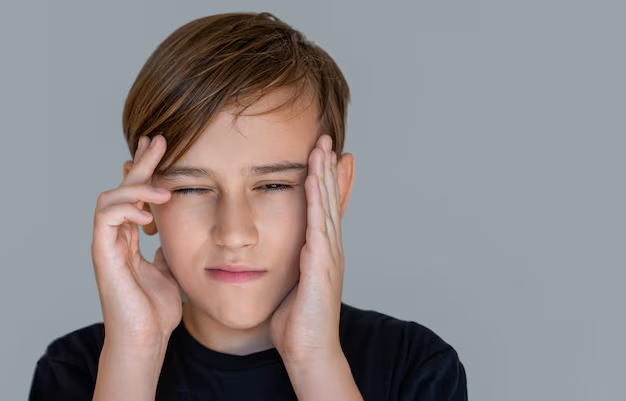Demystifying Hormonal Acne: What to Look For and How to Identify It
When skin woes arise, and regular acne treatments seem to falter, you might find yourself asking, "Could this be hormonal acne?" If you're puzzled by this persistent skin condition, you're not alone. Hormonal acne tends to strike during those pivotal moments when our hormones are on a rollercoaster ride, namely puberty, menstruation, pregnancy, and even menopause. Understanding what hormonal acne looks like can equip you with the knowledge to recognize, manage, and potentially mitigate its effects on your skin. Let's dive deeper into the nuances of hormonal acne and explore the factors that bring it to life on our complex canvas: the skin.
Understanding Hormonal Acne: The Basics
Hormonal acne primarily refers to acne that results from fluctuations in hormone levels. These fluctuations can trigger excess oil production, leading to clogged pores and the eventual development of acne lesions.
What Makes Hormonal Acne Different?
Location and Timing: Typically, hormonal acne appears in specific areas of the face, notably around the chin, jawline, and lower cheeks, though it can also affect the neck and back. Women often experience it cyclically, usually coinciding with their menstrual cycles.
Nature of Breakouts: Hormonal acne often manifests as deep, cystic bumps beneath the skin that can be painful and hard to pop. These cysts usually don't come to a head like regular pimples and can be particularly stubborn.
What Does Hormonal Acne Look Like?
Discovering hormonal acne can be challenging due to its resemblance to other acne types. Here's a closer look at how to spot these stubborn blemishes:
Spotting the Symptoms
Deep Cysts: Unlike surface-level blackheads or whiteheads, hormonal acne appears as deep, painful cysts beneath the skin. These cysts are often inflamed and do not have a visible "head."
Blackheads and Whiteheads: While less common, some people may experience a mixture of deep cysts alongside traditional blackheads and whiteheads around the affected areas.
Red, Inflamed Skin: The areas affected by hormonal acne often appear red and inflamed, owing to the depth and severity of the lesions.
Key Indicators By Age and Gender
Although hormonal acne can affect anyone, understanding its specific markers in different demographics can be helpful:
Adolescents and Teens
- Common Areas: For teenagers, hormonal acne frequently appears on the forehead, nose, and chin.
- Association with Puberty: This age group sees fluctuating hormones due to puberty, accelerating oil production, and developing acne.
Adult Women
- Cycle Connection: Adult women often see breakouts around their menstrual cycle. Increased progesterone levels can boost oil production, exacerbating acne.
- Chin and Jawline: The lower face is the most common area for hormonal breakouts, with cystic acne being prevalent.
Menopause and Beyond
- Menopausal Hormonal Shifts: During menopause, estrogen levels drop, which can lead to acne in women who might not have experienced it before.
- Complexion Changes: Some women notice drier skin, but breakouts can still occur usually around the jawline and neck.
Factors Contributing to Hormonal Acne
Several factors can magnify your risk of developing hormonal acne, making them crucial elements to consider:
1. Hormonal Fluctuations
Androgen Levels: An increase in androgens can enlarge sebaceous glands and increase sebum production. These hormonals are often a root cause of acne flares.
2. Diet and Lifestyle
- High-Glycemic Foods: Consuming foods with a high sugar index can spike insulin levels, pushing androgen levels higher and exacerbating acne.
- Dairy and Quality of Fats: A diet rich in processed dairy and unhealthy fats might trigger hormonal imbalances.
- Stress Levels: Stress augments the production of cortisol, a hormone that, like androgens, can enhance oil production.
3. Environmental Factors
- Pollution and Humidity: These can clog pores and create a breeding ground for acne.
- Cosmetic Products: Non-comedogenic products are vital since using pore-clogging makeup can make breakouts worse.
Managing and Coexisting with Hormonal Acne
Although managing hormonal acne often requires professional guidance, certain lifestyle adjustments and skincare practices can help maintain a clearer complexion.
Skincare Adjustments
- Gentle Cleansing: Use a mild, sulfate-free cleanser to remove excess oil without stripping your skin.
- Non-Comedogenic Products: Opt for products that won’t clog your pores. Look for labels indicating "non-comedogenic" when buying moisturizers and makeup.
Dietary Considerations
- Balanced Diet: Embrace a diet rich in fruits, vegetables, lean proteins, and whole grains to support hormonal balance.
- Limit Sugar and Dairy: Reduce intake to mitigate hormonal imbalances.
- Hydration: Drink plenty of water to help your body detoxify and maintain clear skin.
Beyond the Remedies: Emotional Well-being
Coping with hormonal acne can take a toll on your mental health. Mindfulness and stress-management techniques, such as meditation or yoga, can help manage emotional challenges while promoting overall wellness.
Exploring Future Steps
While hormonal acne can be persistent, empowering yourself with knowledge is the first step toward effective management. Identifying and understanding its characteristics can lead to better treatment conversations with healthcare professionals.
Consult a Dermatologist: Consider seeking professional guidance if hormonal acne is affecting your life quality. Dermatologists can assess and recommend personalized treatments.
Keep a Skin Diary: Monitor your skin changes, diet, and lifestyle choices to identify potential triggers and patterns.
Empower yourself by being proactive, informed, and patient. Hormonal acne might be a formidable opponent, but armed with knowledge and awareness, you're better prepared to navigate its challenges.
Quick Tips for Managing Hormonal Acne 🌟
- Maintain a Skincare Routine: 🌿 Opt for gentle, non-comedogenic products.
- Monitor Your Diet: 🍏 Choose low-glycemic foods, reduce dairy intake.
- Stay Hydrated: 💧 Water helps maintain skin health.
- Mind Your Stress: 🧘♀️ Include stress-reduction techniques like yoga or meditation.
- Consult Professionals: 👩⚕️ Seek medical advice for personalized treatment.
While hormonal acne can be tricky, understanding its unique traits paves the way for informed decisions on management and care. Remember, you're not alone in this journey, and with each step, you're gaining a better grip on your skin health. 😊
